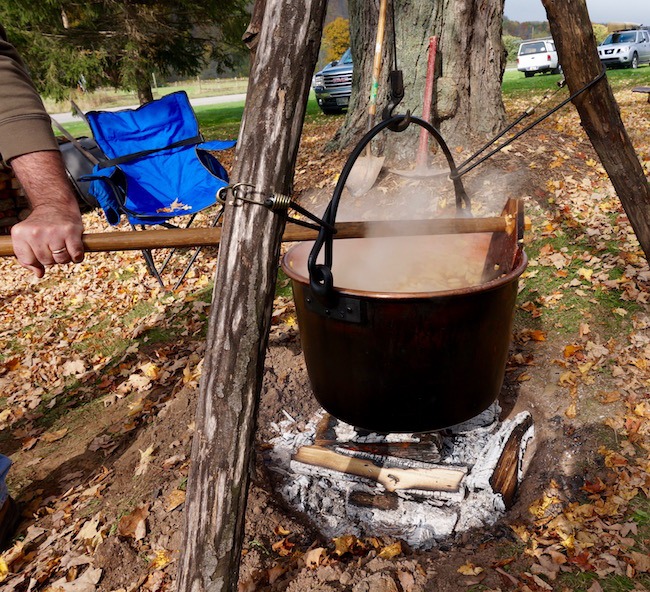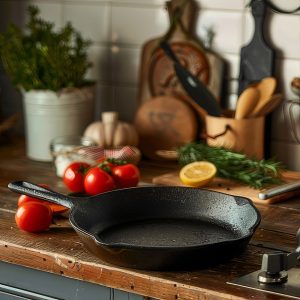The Difference Between a Dutch Oven & A Camp Dutch Oven
A Dutch oven is one of the most versatile tools in the kitchen, but not all Dutch ovens are the same.
You might know the heavy, enameled cast-iron pots that sit on stovetops or in ovens. However, camping Dutch ovens look and work quite differently. These rugged tools are designed for outdoor cooking and bring their own unique features.
The main differences are design and purpose. Traditional Dutch ovens are sleek, with smooth sides and tight-fitting lids. They excel at making soups, stews, and roasts indoors. In contrast, camping Dutch ovens are built for campfires. They have legs to sit over coals and flat lids to hold hot coals on top. This setup creates an even heat, perfect for baking or simmering outside.
The materials also distinguish them. Most camping Dutch ovens are made of bare cast iron, which withstands high heat and rough conditions. Traditional ones often have an enamel coating, making them easier to clean but less suited for open flames.
Understanding these differences helps you choose the right tool for the job. Whether you’re cooking at home or by the fire, the right Dutch oven transforms your meals.
Characteristics of a Camping Dutch Oven and Why They Matter:
- Legs on the Bottom
- Why It’s Important: The legs elevate the oven above campfire coals or a bed of briquettes, allowing heat to circulate underneath. This setup ensures even cooking and prevents scorching.
- Flat, Rimmed Lid
- Why It’s Important: The flat lid has a rim to hold hot coals on top. This feature creates an oven-like environment, with heat coming from above and below, making it perfect for baking breads, pies, or casseroles outdoors.
- Bare Cast Iron Construction
- Why It’s Important: Cast iron retains heat exceptionally well and withstands the intense temperatures of open flames. The bare surface can also develop a non-stick seasoning over time, making it more versatile and durable for outdoor cooking.
- Sturdy Bail Handle
- Why It’s Important: The thick, arched handle makes it easy to suspend the oven over a campfire or carry it securely. This handle is crucial for portability and managing the oven in rugged outdoor settings.
- Thick Walls
- Why It’s Important: The heavy, thick cast iron provides consistent heat distribution, which is essential for slow cooking or maintaining even temperatures in variable outdoor conditions.
- Varied Sizes
- Why It’s Important: Camping Dutch ovens come in multiple sizes, typically measured in quarts, to accommodate different group sizes and cooking needs. This flexibility makes them suitable for solo trips or large gatherings.
These features make camping Dutch ovens essential for outdoor cooking, where versatility and durability are key.


What Does Lodge Manufacturing Company Call Them?
Lodge is the largest manufacturer of Dutch ovens. Their website is full of helpful information about cast iron pots. You’ll find tips on seasoning, care, and how to get the most out of them.
I checked their site to see how they name their two Dutch oven styles. The ones without legs are simply called Dutch Ovens. The ones with legs and flat lids are named Camp Dutch Ovens. I need to ask LaRue if he mixed up the names when we last talked.
Did you know Lodge started as the Blacklock Foundry in 1896? Joseph Lodge named it after his friend and minister. In 1910, a fire destroyed the foundry. Lodge rebuilt and renamed the company Lodge Manufacturing Company.
Today, Lodge remains a family business. The current CEO and Chairman of the Board are Joseph Lodge’s great-grandsons. They’ve kept the tradition alive, expanded the product line, and modernized their processes.
History
Where the name “Dutch Oven” comes from is not known. There are numerous theories, including:
An Englishman named Abraham Darby learned about the casting process while visiting Holland in 1704 and then returned to England to create his own casting process. He used this process to manufacture pots that may have been some of the first “Dutch Ovens” using the process he learned in Holland.
Some say the name started with the Pennsylvania Dutch settlers who cooked with cast iron pots, later called Dutch Ovens.
And then some think the name comes from early Dutch traders who sold this kind of cast iron pot, later Dutch Ovens.
These cast iron pots are called Casserole Dishes in English-speaking countries other than the United States. The word casserole is French for pot.
The French company, Le Creuset, started making their own version of Dutch ovens in the early 1920s. However, it used a “non-porous interior enamel allowing for easy cleaning and eliminating the need to season the cast iron.”
I have a few different-sized Le Creusets and love them for their design and beauty. They are perfect for many of my stews and braises and look great on the table when serving.

Some Interesting Facts
Did you know people once considered Dutch ovens so valuable they included them in their wills? During the colonial period, these pots were essential for cooking. George Washington’s mother even passed down her “iron kitchen furniture” to her grandson and granddaughters.
The French Le Creuset Dutch oven offers a modern twist. Its enameled interior doesn’t need seasoning, and you can clean it with soap and water—something you should avoid with bare cast iron.
However, it’s less heat-resistant than traditional cast iron. You can’t toss it into a campfire, and its lid handle might melt in a high-temperature oven unless you wrap it with aluminum foil. That’s my trick, at least.
Dutch ovens have made a strong comeback. After World War I, people considered them “old-fashioned,” and their popularity declined. But in the 1970s and 1980s, they regained their status. Today, even with modern gadgets, they remain a kitchen staple. They’re so iconic that Arkansas, Texas, and Utah named the Dutch oven their official state cooking pot.
Other Names for Dutch Ovens
Interestingly, other cultures have their names for these pots. In Japan, it’s a tetsunabe. In the Balkans, it’s called a sač. Eastern Europe and Central Asia know it as a chugun. South Africans call it a potjie, Australians a bedourie, and the Dutch themselves call it a braadpan.

How to Choose A Dutch Oven Right For You?
Check out my post – How to Choose One That’s Right For You, to learn more about buying a Dutch Oven to fit your needs.















2 Responses
That was really useful information, thank you.
cheers Herb
In Australia s bedourie oven is made of spun steel. Flatter and lighter than a camp oven. And a Dutch oven Befouries where first made by two fellows from Bedourie Queensland